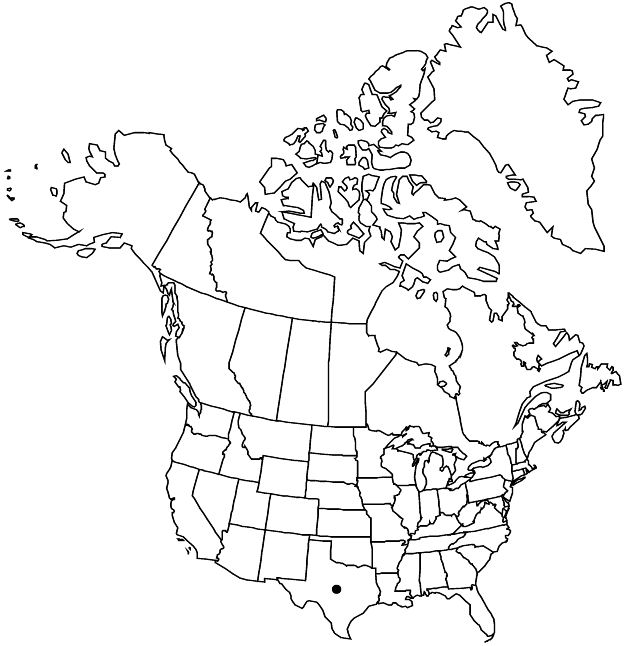Mentzelia mexicana
Wrightia 4: 21. 1968.
Plants biennial, bushlike or candelabra-form. Stems solitary, erect, straight; branches distal or along entire stem, distal or proximal longest, antrorse, upcurved; hairy. Leaves: blade 24–82 × 11.7–29.1 mm, widest intersinus distance 3.4–19 mm; proximal oblanceolate or elliptic, margins dentate, serrate, or pinnate, teeth or lobes 6–16, slightly antrorse or perpendicular to leaf axis, 1.4–5.1 mm; distal elliptic to lanceolate, base usually not clasping, sometimes a few clasping, margins dentate, serrate, or pinnate, teeth or lobes 6–12, slightly antrorse or perpendicular to leaf axis, 2.5–6.7 mm; abaxial surface with simple grappling-hook, complex grappling-hook, and usually needlelike trichomes, adaxial surface with simple grappling-hook and needlelike trichomes. Bracts: margins entire. Flowers: petals golden yellow, 10.2–15.3(–17) × 2.5–6.2 mm, apex rounded, glabrous abaxially; stamens golden yellow, 5 outermost petaloid, filaments narrowly spatulate, slightly clawed, 9.9–14.4(–16.7) × 2–4.8 mm, without anthers, second whorl with anthers; anthers straight after dehiscence, epidermis smooth; styles 4.5–10.9 mm. Capsules cup-shaped, 7.1–12.8 × 5.6–8.4 mm, length to 2 times diam., base rounded, not longitudinally ridged. Seeds: coat anticlinal cell walls straight, papillae 8–12 per cell. 2n = 18.
Phenology: Flowering Mar–Oct.
Habitat: Arroyos, knolls, steep slopes, gypsum and limestone clay and shale.
Elevation: 700–1500 m.
Distribution

Tex., Mexico (Chihuahua, Coahuila, Nuevo León, Zacatecas).
Discussion
In the flora area, Mentzelia mexicana occurs in Brewster, Hudspeth, and Presidio counties.
Selected References
None.